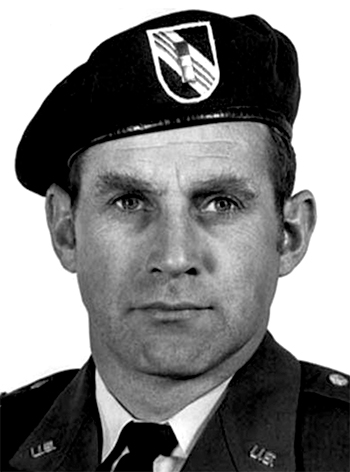
|
Laird P. Osburn |
 |
|||
| Rank, Service | ||||
Chief Warrant Officer 4 CW4, U.S. Army |
||||
| Veteran of: | ||||
|
||||
| Tribute: | ||||
Laird Osburn was born on January 2, 1937, in Webster Springs, West Virginia. He enlisted in the U.S. Army on December 31, 1954, and attended basic training at Fort Knox, Kentucky, from January to March 1955. SP4 Osburn then completed airborne school at Fort Campbell, Kentucky, followed by service with Company I of the 508th Airborne Regiment at Fort Campbell from April to July 1955, and then deployed to Japan from July 1955 to July 1956. He returned to Fort Campbell with the 508th from July to August 1956, and then served with Company A of the 501st Airborne Infantry Combat Group (later redisgnated Company A, 1st Airborne Battle Group of the 501st Infantry Regiment) at Fort Campbell from August 1956 to until he left active duty on December 19, 1957. Sgt Osburn returned to active duty in the Army on February 24, 1959, and served with U.S. Army Training Center, Armor, at Fort Knox, Kentucky, from February 1959 to June 1960. His next assignment was with Headquarters Troop, 1st Reconnaissance Squadron of the 14th Armored Cavalry Regiment in West Germany from July 1960 to August 1961, followed by service with the Long Range Reconnaissance Patrol Company (Airborne) in West Germany from August to December 1962. He served with Company C, 3rd Armored Rifle Battalion of the 50th Infantry Regiment in West Germany from January to June 1963, and he then served with Company C, 1st Airborne Battle Group of the 506th Infantry Regiment at Fort Campbell from July to August 1963. Sgt Osburn next attended Warrant Officer Candidate School and Fixed-Wing Aviator training at the U.S. Army Aviation School at Fort Rucker, Alabama, from August 1963 until he was commissioned a Warrant Officer in the U.S. Army on June 25, 1964. WO1 Osburn served as an O-1 Bird Dog pilot with the Aviation Company, 7th Special Forces Group (Airborne) at Fort Bragg, North Carolina, from June 1964 to June 1965, and then with the 54th Aviation Company in South Vietnam from June 1965 to June 1967. His next assignment was as an O-1 pilot with the John F. Kennedy Center for Special Warfare at Fort Bragg from June 1967 to October 1968, followed by service as an RU-1 Otter pilot with the 146th Aviation Company in South Vietnam from October 1968 until he was shot down in Cambodia and was captured and taken as a Prisoner of War on February 12, 1969. President Nixon managed to get him and the other members of his aircrew released after 28 days on March 11, 1969, and he then returned to the John F. Kennedy Center for Special Warfare at Fort Bragg from May to October 1969. CW3 Osburn next attended Rotary-Wing Aviation training at Fort Rucker, Alabama, from October 1969 to January 1970, and then remained at the school until September 1970. He served at the John F. Kennedy Special Warfare Center and School at Fort Bragg from September to December 1970, and then as a helicopter pilot with the 6th Special Forces Group (Airborne) at Fort Bragg from December 1970 to March 1971. His next assignment was as a helicopter pilot and then fixed-wing pilot with the 5th Special Forces Group (Airborne) at Fort Bragg from March 1971 to August 1974, followed by service with the John F. Kennedy Special Warfare Center and School at Fort Bragg from August 1974 until his retirement from the Army on March 1, 1977. Laird Osburn Flew West on May 2, 2001, and was buried at Homeland Cemetery in Webster Springs, West Virginia. |
||||
|
||||

